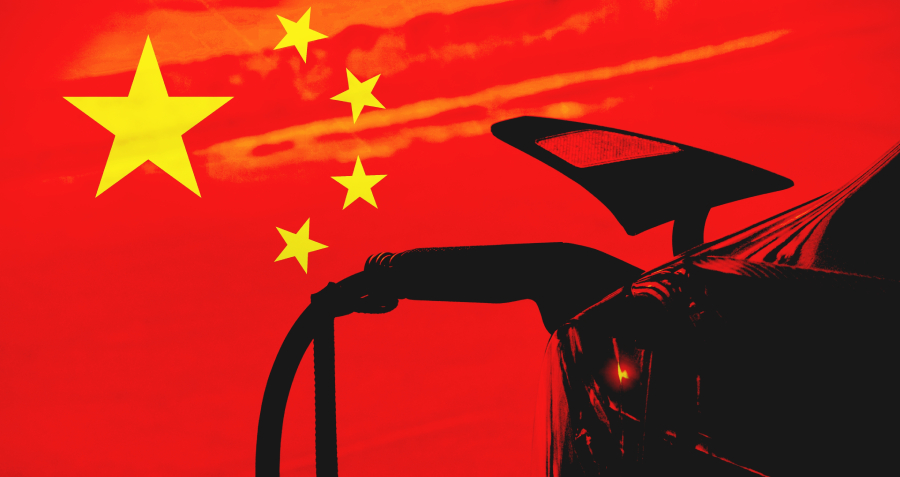Structural adjustments in the unicorn ecosystem
The total number of unicorns—a non-listed company with a market value of over $1 billion—globally continues to grow, albeit more slowly than before, and artificial intelligence (AI) is undoubtedly the biggest sector for opportunity in the unicorn ecosystem at the moment, with the AI wave driving much of the growth. The total number of unicorns worldwide is now, conservatively, approaching 1,300 across 53 countries, with a cumulative valuation of $4.5 trillion.
The number of companies in China qualifying as unicorns has stabilized after a sharp decline in recent years, but structural adjustments are ongoing. China has been home to the second largest number of unicorns, behind the US, for years, but the number of newly minted unicorns in China in 2024 fell to a near-decade low. It should be noted that the number of Chinese unicorns as estimated by foreign and domestic data platforms varies greatly due to the differences in information sources. The data discrepancy essentially reflects a “geo-split” in global innovation perceptions, with the trust and standards gap between China and the US, as well as the global capital markets, becoming wider and wider.
Whatever the case, the total number of unicorns in China remains significant, showing resilience and growth potential in certain sectors, including electronics and information, automotive and transportation, advanced manufacturing and healthcare.
Beyond the US and China, India and Southeast Asia, both benefiting from huge demographic dividends, accelerating digitization and a shift in some global capital, are emerging as new unicorn growth hotspots, demonstrating strong market potential and innovation vitality.
China’s newer unicorns have mainly been distributed across science and technology and strategic emerging industries such as AI, robotics, new energy, semiconductors, biotechnology, etc., reflecting the trend of transitioning from business model innovation to technology-driven transformation, as well as the demand for domestic innovation to cope with external pressures.
State-owned capital and domestic tech giants are continuing to play a major role in financing, characterized by innovation-driven high technology development and deepening industry chain integration. Although the upward trend in valuations has slowed down, headline innovators have continued to acquire capital, signaling that China’s physical technology and digital economy both still have strong growth potential.
Additionally, impact investing, which focuses on social and environmental outcomes, is gaining traction and investor preferences have also shifted from “growth at all costs” to a greater focus on profitability and sustainable business models.
Further shifts in China’s unicorn ecosystem
China’s venture capital (VC) market has generally been on a downward trend in recent years due to economic uncertainty and changes in the domestic regulatory environment. The amount of foreign VC funds in China has also dropped due to friction with the US. China’s VC/private equity (PE) market did see a year-on-year increase in Q1 2025 compared to the same period the year before, but it was also down from the previous quarter.
In line with these trends, investment in China’s unicorn ecosystem is changing. There has been a growth in domestic capital involvement, with the leading AI and semiconductor chip companies—such as Smart Spectrum AI, Step Star and Cheung Kong Storage—receiving huge financing from industry funds. And with the establishment of the National Venture Capital Guiding Fund (NVCGF) there has been an uptick in both state capital involvement and industrial capital injections, with the state usually taking a larger role than private enterprises.
Unicorn development is becoming one of the main battlefields in China’s new round of industrial upgrading and regional economic transformation. The 2025 government work report, for the first time, proposed to “support the development of unicorn enterprises and gazelle enterprises.” The policy advocates for the idea of “patient capital”—investment with a longer-term focus—as a growth mechanism for investment in future industries such as bio-manufacturing, quantum technology, embodied intelligence and 6G, and also promoted the accelerated incubation of hard technologies.
Another document produced by the State Council in 2025 also provided guidelines for the high-quality development of government investment funds at the national level. Both of these policies will continue to influence the development of China’s unicorns, with the end result being a smaller number of higher quality unicorns.
Although the number of new unicorns in China is not as remarkable as it once was, the number of investment deals in start-ups has increased for four consecutive quarters, and demonstrates a market trend of “investing early, investing small, investing long-term, and investing in technology” which has become more common over the last year. It also reflects the paradigm shift in the VC market.
The AI Wave
In 2024, generative AI was the main area for growth in technology development, while at the same time growth of AI penetration in industries such as drug discovery, robotics and software engineering accelerated. According to Pitchbook and CB Insights, global VC investment in AI reached a record of more than $100 billion in 2024.
Moving into 2025, AI is no longer just a popular sector in and of itself, but is now the underlying technology behind development across almost every industry. The birth of coming unicorns will be highly dependent on the breadth and depth of each company’s AI strategy.
Nearly half of the new unicorns minted since 2024 have come from the AI space, and in Q1 2025, 58% of total global VC investment went into AI startups, more than double the 28% in Q1 2024. In North America, this concentration is even stronger, at over 70% of investment being applied to AI. The global AI sector drew in $73.1 billion in investment in Q1, already over half of the total for the entirety of 2024, with OpenAI’s $40 billion in funding being particularly notable.
The US maintains its AI leadership in large model development (GPT Series, Grok, etc.), artificial general intelligence (AGI) exploration and technology commercialization, thanks to its strong fundamental research, top talents and mature VC ecosystem. As a result, high value AI unicorns frequently emerge in the country, and companies such as OpenAI, Anthropic and xAI continue to attract huge amounts of capital (they are also the unicorns with the largest amount of financing and the fastest valuation increases in recent years). More than half of the top 10 emerging unicorns globally in terms of valuation in Q1 2025 were AI startups.
While catching up quickly, China is focusing more on the application of AI (to serve its huge domestic market), algorithm efficiency optimization (to cope with arithmetic limitations, DeepSeek being a good example) and the construction of an open-source development ecosystem (to accelerate the popularity of the technology).
As a result of the country’s national strategic priorities, AI+ has accelerated its penetration in manufacturing, transportation and other fields, and Chinese startups in the field of AI macromodeling, such as Smart Spectrum AI and Baichuan Intelligence, have rapidly developed into unicorns after just three years of existence. These companies have also been highly attractive for VC/PE activity, as well as state-owned capital, for instance, Smart Specturm AI has received more than ¥1.8 billion in strategic financing, and filed to start its IPO process in April 2025.
AI has not only become a new high ground for capital accumulation, but cutting-edge AI technology has also empowered downstream industries such as healthcare, finance and new energy to dramatically shorten their innovation cycles. The proliferation of low-cost, high-performance AI models may provide new innovators with the opportunity to develop differently, giving rise to “lean unicorns”—AI-enabled, small-team, high-efficiency innovation companies (e.g., “3-person unicorns”). On the other hand AI companies that rely on high-cost proprietary models may now find it more difficult to grow.
But, despite the already huge financing and ultra-high valuations in the field of AI, investors are still under pressure to accelerate their involvement in the sector, thanks to both expectations of rapid technological development and a general fear of missing out from capital markets. But given the already high costs of entering or expanding the market, a growing concentration of investment could lead to valuation bubbles, particularly because many AI unicorns still have unclear business models, an inability to turn a profit and lack a technology moat.
The AI investment boom has sparked fears of another generation of “zombie unicorns”—companies that were once valued at more than $1 billion but have now seen their value shrink dramatically. This phenomenon was particularly pronounced during the post-pandemic financing rebound in 2021, when a large number of companies were severely overvalued. Some investors are also concerned that making large bets without a clear path to return on investment could distract startups from building sustainable business models, and the phenomenon of “AI Washing” (pseudo AI concepts) also needs to be guarded against.
AI alone is no longer the key to unicorn development, and the capital market urgently needs to shift from investing in concepts to investing in application and in income. Building robust technical leadership, focusing on core business and realizing commercialization will be the key to future success.
Industry Focus
Tech-driven industrial upgrading will dominate the new cycle of global unicorns, with fields such as AI, robotics, semiconductors and new energy among those that will continue to breed these businesses. So far in 2025, the more active areas of entrepreneurship, investment and financing in China have mainly been semiconductors and AI in the electronics industry; new materials development and robotics in advanced manufacturing; medical devices and biomedicine in healthcare; and new energy sources.
Technology will continue to empower and transform traditional industries at a fundamental level, and cross-border integration and innovation will give rise to more new business forms and types. In recent years, throughout the global unicorn ecosystem, the commercialization of large AI models has become a key trend, while in China’s domestic market humanoid robots and emobied intelligence, new energy, semiconductors, commercial aerospace, the low-altitude economy and other fields have also attracted investment. But while market potential is huge, competition is extremely fierce, particularly given the dominance of some firms in the production of foundational models.
Application-level AI innovations are now blossoming, and the birth of new unicorns is mainly coming from startups in programming (e.g. Anysphere), data centers (e.g. Global Switch), basic modeling and search (e.g. Perplexity), as well as in some other vertical application areas, which are more reliant on a deeper understanding of specific industry issues.
This year has also seen AI become one of the biggest trends for SaaS developers, who are integrating AI agents and other related applications into solutions to handle labor-intensive tasks.
AI technology iteration speed also means that the chance of being overtaken by a new startup is quite high, and the birth of future AI unicorns will be more concentrated in a small number of enterprises that have a wider array of comprehensive strengths.
In the future, as AI technologies mature and become increasingly differentiated, AI investment will become more rational, shifting from chasing generic large AI models to focusing on vertical industry applications, AI infrastructure optimization and easily explainable/reliable AI technologies.
The convergence of AI with other technologies (e.g. AI + biomedicine or AI + materials), synthetic data and other areas is also giving rise to new opportunities. The use of AI for enterprise digitalization is also expected to be under huge demand, especially overseas, where the enterprise service sector remains a rich vein for future unicorns to pursue.
Against the backdrop of Sino-Western technological competition as well as the global response to climate change, physical technologies or ‘hard’ sciences will see greater competition and growth. Semiconductors and autonomous control systems, new energy and energy storage, high-end manufacturing, biotechnology, green technologies (such as carbon capture and sustainable materials) and healthcare, among others, will all have a greater impact on livelihoods and sustainable development, and will therefore continue to be favored in both policy direction and capital application.
China is already a global leader in new energy and autonomous driving, with a huge market backed by a complete industrial chain, and, as a result, a large number of unicorn companies. Intelligent manufacturing has become key to China’s industrial upgrading and self-reliance strategy, with humanoid robots/embodied intelligence the future of industrial and service industries, as well as in other scenarios.
Since the beginning of this year, boosting domestic consumption has also been highly prioritized at the policy level. Relying on the huge domestic market and developed digital economy, new consumption/retail will be characterized by active business model innovation, as seen in the success, last year, of the game Black Myth Wukong, which led to a boost in consumption and the creation of a unicorn in the form of its developer Game Science.
In addition to the above areas, quantum computing, space technology, brain-computer interfaces, synthetic biology and next-generation computing platforms may also become home to the next wave of disruptive unicorns.
Comparing US-China development
The US remains the global leader in unicorns, with over 700, as well has being home to over half of the world’s VCs as of 2025. China, second in the number of global unicorns, is seeing a slowing growth rate, both due to policy impacts and the impact of the changing external environment, as a result valuation structure and market expectations are being adjusted. Although they are the world’s two largest cultivators of unicorns, the differences in the development of the China and US ecosystems is stark, and this is leading to something of a parallel, rather than joint, development trend.
Increasing global trade barriers, coupled with a rise in geopolitical risk is not only changing capital flows, but also lowering the available dividends of globalization. As a result, unicorns with a domestic focus on supply chain integration, particularly in China, will likely have easier access to financing and more resilient valuations. On the other hand, unicorns that are highly dependent on older global trade patterns, especially US-China trade, may face difficulties with financing and downward pressure on valuations, forcing them to adjust their market strategies.
International capital tends to be cautious about investing in China, and US dollar VC into the country has retreated rapidly—with some of this capital shifting focus to emerging markets such as India and Southeast Asia. Tightening of national security-related vetting in the US affects cross-border M&A and tech investment, while China’s domestic financing is becoming increasingly dependent on state-owned capital or incumbent tech giants. Overall, global capital flows are showing increased geopolitical sensitivity and regional fragmentation.
The competition in science and technology between the US and China has pushed the latter to accelerate its own R&D investment and pursue greater domestic substitution, leading to China’s new unicorns being concentrated in tech fields that reflect the country’s policy orientation towards strategic emerging industries and independent control of key technologies.
The US-China rivalry is also directly impacting and reshaping the overseas strategies of Chinese companies, which are facing greater geopolitical and compliance challenges and may chose to refocus more on deepening their domestic market presence. Tariffs are increasing costs, stricter investment reviews are discouraging M&A and investment, data security concerns (as shown by the TikTok case) can lead to potential bans or operation restrictions in the US and some of its allied markets, and a lack of political trust creates an unfriendly business environment.
Influenced by the geopolitical atmosphere, Chinese brands in the European and American markets are facing trust deficits and public opinion challenges, and some of the unicorns have to weaken their Chinese attributes and adopt different packaging or localized team operations to cope with the situation.
Those Chinese unicorns that choose not to refocus on the domestic market are shifting the focus of their overseas strategy from Europe and the United States to emerging markets such as Southeast Asia, the Middle East, Latin America and Africa. These regions have more preferable policies, are undergoing accelerated digitalization and are often more receptive to Chinese technologies and products.
Thanks to the significant US capital investment decline, Chinese unicorns now need to seek capital support in other regions such as the Middle East and Southeast Asia to raise money in international markets, or even seek new channels for overseas listings (e.g., London, Hong Kong).
The US-China trade friction is also forcing China’s offshore unicorns to improve their compliance, risk management, localization and global supply chain capabilities. In the future, the ability to establish brands in emerging markets, realize technology and model exports and integrate into the global industrial chain will determine the position of Chinese unicorns in the global innovation landscape.
The strengths of China’s unicorn ecosystem lie in the country’s huge domestic market and opportunities for business model application, rapid commercialization and iterative capabilities, a huge bonus is also the large amounts local local talent, efficient infrastructure, strong government support and industry guidance capabilities.
The main challenges today are the need to break through key core technology bottlenecks, cope with regulatory uncertainty, enhance capital market maturity and deal with external pressures from geopolitics. Compared with the mature multi-level capital market and active M&A ecosystem in the US, the maturity of China’s capital market and possible exit mechanisms are yet to be perfected.
Although policy direction is encouraging “patient capital” and optimizing exit channels, the exit paths for unicorns in China are still relatively limited, which in turn may affect the incentives for early-stage investment and the efficiency of unicorn development. This requires further active promotion of capital market reform at the policy level to broaden financing and exit channels for technology-based enterprises.
Value Chain Reconstruction
Compared with the previous consumer Internet revolution, the new generation of unicorns faces a longer R&D cycle, higher capital investment requirements, a more complex industrialization path and a stricter regulatory environment, requiring more patient capital and teams with industrial background knowledge.
The number of founders with scientific or engineering backgrounds has increased in the hard science and technology sectors, but to make up for any business shortcomings many are bringing in professional teams for commercialization, market expansion, organizational management, etc. These companies, more importantly, also need an innovation culture that tolerates failures and institutional safeguards that truly respect intellectual property rights.
As ideas of “regionalized innovation” and “de-globalization” grow, unicorns need to balance global expansion and local cultivation, and adapt to supply chain restructuring and policy divergence.
US-China competition and global geopolitical uncertainty will continue to affect capital flows, technology cooperation and market access, which may lead to further fragmentation of regional innovation ecologies (e.g., the formation of parallel ecologies between China and the US in certain science and technology fields), and supply chain security and autonomy have become important considerations for companies and countries.
Enterprises need to incorporate geopolitical risks into day-to-day management and build more resilient global operation strategies and supply chain systems. The importance of regional markets and localization strategies will continue to increase.
US-led trade protectionism will accelerate China’s economic integration within Asia. Asian economies will focus more on strengthening intra-regional supply chains, logistics systems and trade governance, as evidenced by the advancement of the trilateral trade agreement between China, Japan and the Republic of Korea, which suggests that economic pragmatism is driving trading partners to seek more reliable and predictable regional linkages.
Accelerated regional integration will also give rise to new business opportunities, particularly in the areas of trade infrastructure and digital trade. Those unicorns that are able to keep up with these changes, quickly adjust their strategies and build their core competencies are expected to occupy a favorable “ecological niche” in the new global landscape and continue to grow.
Clarifying the value and significance of unicorns
If a company’s only label is that of a unicorn, rather than one that solves real problems and creates sustainable value, then it is at best just a token in the capital game.
The future of China’s unicorn ecosystem will no longer see rapid growth in terms of quantity and valuation, but will focus more on the quality of development, the degree of technological sophistication, the deep integration of the industrial chain and the ability of a company to strategically position itself in the global value chain.
Unicorns that can thrive in the face of adversity are the most resilient and evolutionary part of the ecosystem. The super unicorns of the future will not only disrupt the technology or business model norms, but also help write the “rules of the game” of the industry.
Against the backdrop of the current emphasis on “patient capital” and new productive forces, the development of unicorns (especially in strategic emerging industries) is of critical importance to China’s transformation and upgrading of its industrial structure to an innovation-driven one, and is a key reference for measuring and driving the vitality of innovation.
These high-growth enterprises often represent technology-intensive, knowledge-intensive, high-value-added emerging industries, and are a manifestation of the development of new quality productivity. They not only create high-quality jobs, promote a new employment structure and mobility of talents, but also lead the digital transformation of traditional industries and have the potential to become a new growth pole driving the coordinated development of the regional economy.
The strategic transformation of the innovation paradigm also has its own pain points. Advanced manufacturing, medical technology and other hard science and technology areas that require long-term R&D investment and high technical barriers will play a more central role, as business model innovation alone may not produce unicorns as easily as in the past. Unicorns in the field of hard science and technology are slow to commercialize, and their cultivation requires more patience and deeper knowledge accumulation, making it difficult to achieve explosive growth in quantity in the short term.
At a time when national strategic guidance plays a key role in development, the market-based innovation mechanism and vitality represented by unicorns are still indispensable. The agility and efficiency of great startups, their quick response to market needs, and their flexible innovation model are difficult to fully replace with top-down planning.
Focusing on the unicorn ecosystem is not just about the myth of wealth or the iteration of business models, but also about observing and thinking about how to better realize the organic combination of “active government” and “effective market” under the guidance of the national strategy to ensure the diversity and continuous endogenous impetus of the business innovation ecosystem. It is also to observe and consider how to better realize the organic combination of “effective government” and “effective market” under the guidance of national strategy, so as to ensure the diversity of business innovation ecosystem and sustained endogenous momentum.
The future belongs to innovators who can see trends, remain resilient, and create sustainable value in a complex and changing environment.
(Note: Unless otherwise indicated, all relevant data in this paper are as of May 2025)
By Teng Bingsheng, Professor of Strategy at CKGSB






















